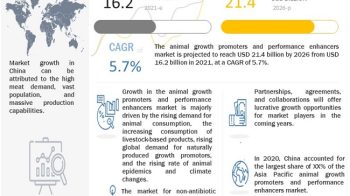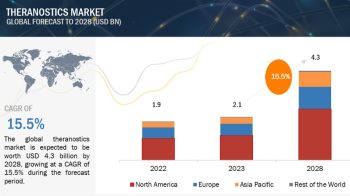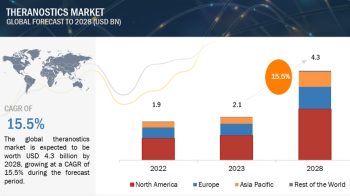The study involved four major activities to estimate the current size of the global active pharmaceutical ingredient market. Exhaustive secondary research was done to collect information on the market, its peer markets, and its parent market.
The next step was to validate these findings, assumptions, and sizing with industry experts across the value chain through primary research. Both top-down and bottom-up approaches were employed to estimate the complete market size. Thereafter, market breakdown and data triangulation were used to estimate the market size of segments and subsegments.
Market Size Estimation:
Both top-down and bottom-up approaches were used to estimate and validate the total size of the global active pharmaceutical ingredient market. These methods were also used extensively to estimate the size of various subsegments in the market. The research methodology used to estimate the market size includes the following:
# The key players in the industry and markets have been identified through extensive secondary research.
# The revenue generated from the sale of active pharmaceutical ingredients by leading players has been determined through primary and secondary research.
# All percentage shares, splits, and breakdowns have been determined using secondary sources and verified through primary sources.
Download PDF Brochure@
https://www.marketsandmarkets.com/pdfdownloadNew.asp?id=263
The global APIs market is estimated to reach USD 245.2 billion by 2024 from USD 182.2 billion in 2019, at a CAGR of 6.1% during the forecast period. The increasing incidence of chronic diseases, growing importance of generics, and the increasing uptake of biopharmaceuticals are some of the major factors driving the growth of the global APIs market.
Acquisitions and collaborations have been the key growth strategies adopted by players from 2016 to 2018.
Some of the leading players who adopted these strategies include Pfizer, Inc. (US), Novartis AG (Switzerland), Sanofi (France), Boehringer Ingelheim (Germany), and Bristol-Myers Squibb (US).
Key Questions addressed by the report:
# Where will all these developments take the industry in the mid to long term?
# What types of annual and multi-year partnerships are API companies exploring?
# Which are the key players in the market and how intense is the competition?
# Which are the recent contracts and agreements key players have signed?
# What are the recent trends affecting the API manufacturers?
Pfizer is one of the leading players in the APIs market. The leading position of the company is majorly attributed to its exhaustive product portfolio. The company has a strong brand image, which gives it a competitive edge over other players. In order to remain competitive and strengthen its market position, the company primarily focuses on adopting both organic and inorganic growth strategies such as agreements, partnerships, collaborations, product approvals, and acquisitions.
Novartis is another leading player in the APIs market. Its leading position can be attributed to its strong brand recognition and robust product portfolio. In order to maintain its leading position, the company invests a significant amount of its revenue in R&D activities. The significant investment in R&D enables the company to launch innovative and technologically advanced products in the market.
Recent Developments:
# In January 2018, Pfizer entered into a collaboration with Sangamo Therapeutics, Inc. (US) for the development of a potential gene therapy to treat amyotrophic lateral sclerosis (ALS).
# In May 2018, Novartis acquired AveXis, a clinical-stage gene therapy company, to develop a gene-based treatment for spinal muscular atrophy.
# In January 2018, Sanofi acquired Ablynx, a biopharmaceutical company to strengthen its platform for growth in rare blood disorders.
# In January 2018, Sanofi and Alnylam Pharmaceuticals, Inc. (US) announced a strategic restructuring of their RNAi therapeutics alliance to streamline and optimize the development and commercialization of products prescribed for the treatment of rare genetic diseases.
Sanofi is one of the top players in the global APIs market. The leading position of the company is majorly attributed to its exhaustive product portfolio. The company manufactures APIs through its Sanofi Active Ingredient Solutions portfolio, which provides custom synthesis and API contract manufacturing services. The company pursues various growth strategies to strengthen its position in the APIs market. For instance, in July 2016, Sanofi Pasteur, a business unit of Sanofi, entered into an agreement with the Walter Reed Army Institute of Research (WRAIR) (US) to develop the Zika vaccine.
Request Sample Pages@
https://www.marketsandmarkets.com/requestsampleNew.asp?id=263
Boehringer Ingelheim is one of the leading players in the global APIs market. Boehringer Ingelheim’s leading position in the APIs market can be attributed to its exhaustive product portfolio. The company is focused on developing innovative therapies to prolong patient’s lives. Its Prescription Medicines segment is engaged in the development and launch of APIs. In order to remain competitive and further strengthen its market position, the company adopts and implements organic and inorganic growth strategies, such as agreements, partnerships, approvals, alliances, and collaborations.
Bristol-Myers Squibb is a prominent player in the APIs market and holds expertise in the area of pharmaceutical ingredients. The company has a broad product portfolio in biologics, which serves as an important factor for its future growth, especially in the biopharmaceuticals market. In order to maintain its leadership position in the market, the company focuses on growth strategies, such as partnerships and expansions.


